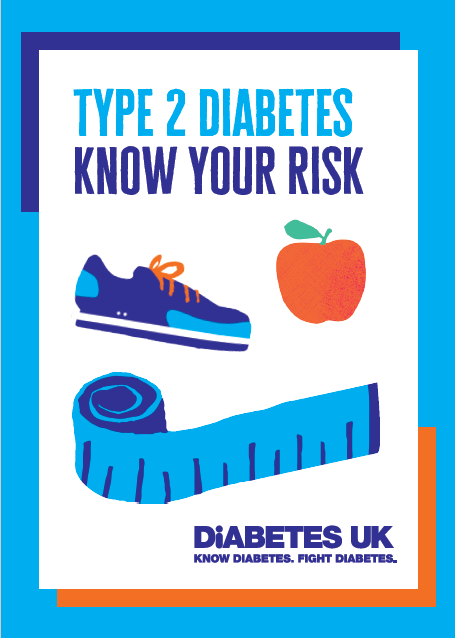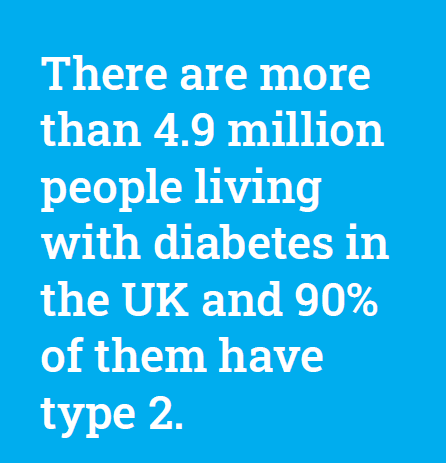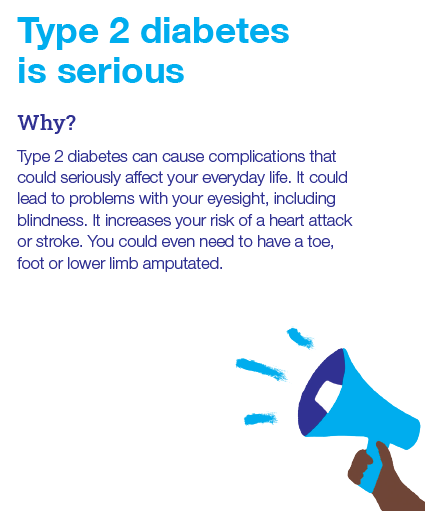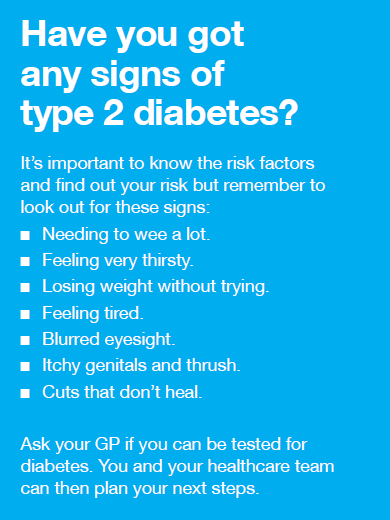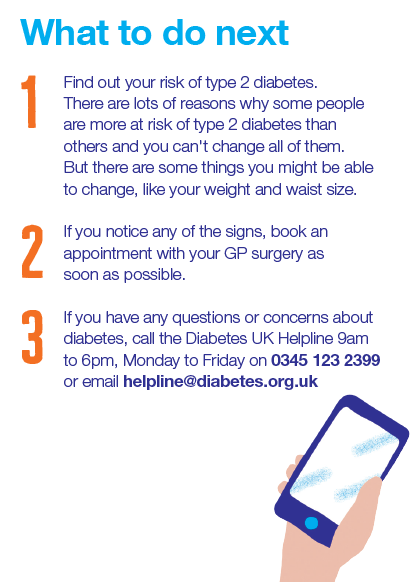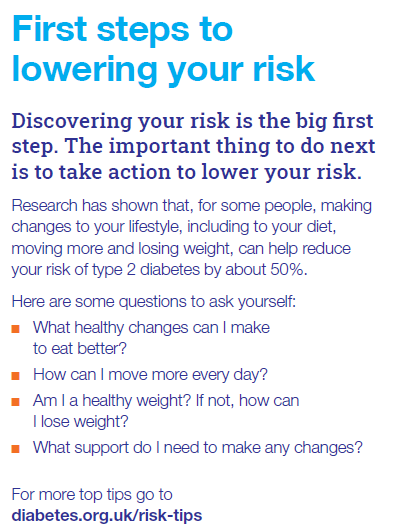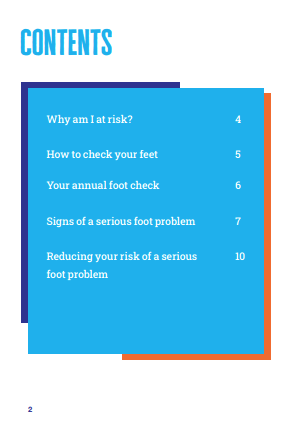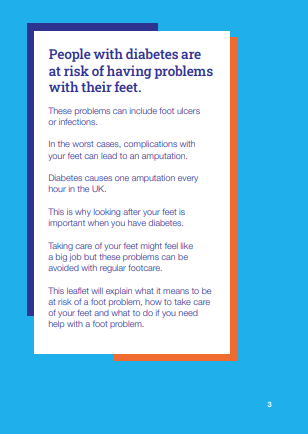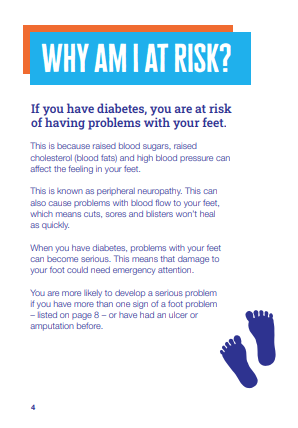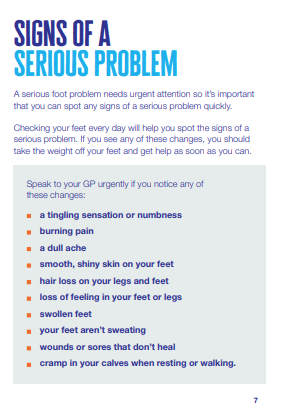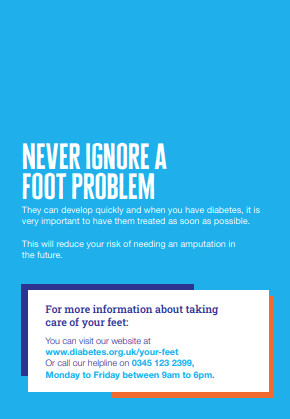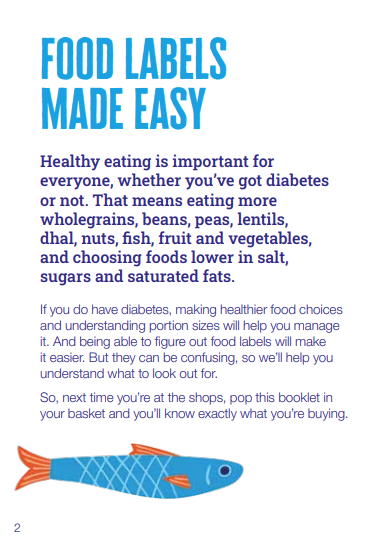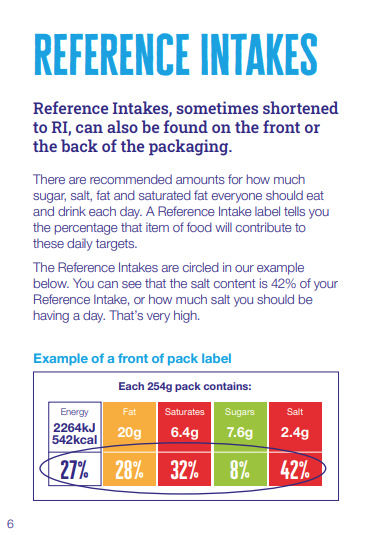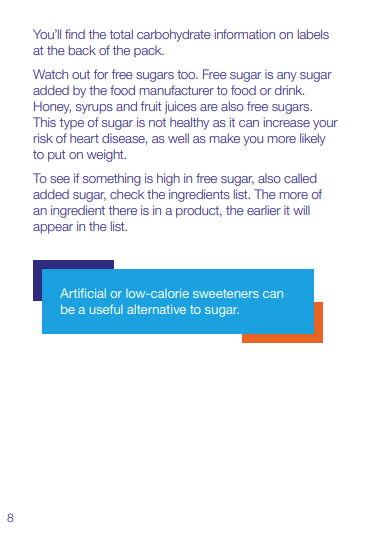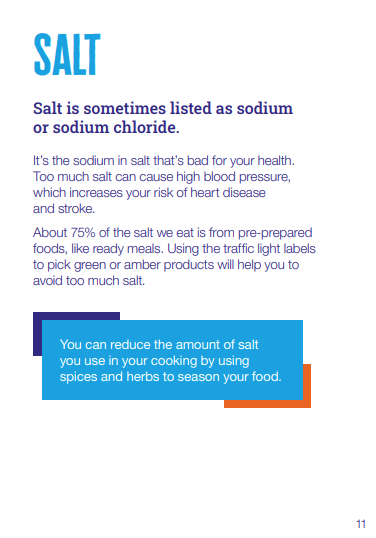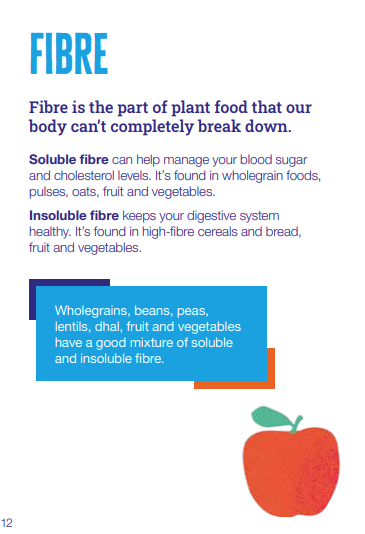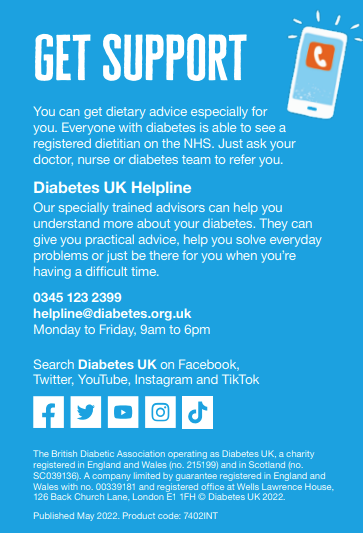Type 2 diabetes check-ups help you reduce the risk of other health problems related to diabetes and help spot and manage any problems early.
Every 3 to 6 months
Blood sugar checks (HbA1C test)
Checks your average blood sugar levels and how close they are to normal.
You have these checks every 3 months when newly diagnosed, then every 6 months once you’re stable.
This can be done by your GP or diabetes nurse.


At least once a year
Feet
Checks if you’ve lost any feeling in your feet, and for ulcers and infections.
This can be done by your GP, diabetes nurse or podiatrist.
Speak to your GP immediately if you have cuts, bruises or numbness in your feet.
At least once a year
Blood pressure, cholesterol, kidneys and weight
Checks for high blood pressure, heart and kidney disease, and your weight, BMI and waist measurement.
This can be done by your GP or diabetes nurse.


Every 1 to 2 years
Eyes
Checks for damage to blood vessels in your eyes.
These checks are usually by a diabetic eye screening service. They may be once a year or every 2 years, depending on your risk and previous test results.
Speak to your GP immediately if you have blurred vision.
Know your risk
Living well with diabetes

Food is one of life’s great pleasures. But if you or someone you live with has diabetes, then you may worry that sticking to the ‘right’ foods all the time will take the joy out of it.
We promise it doesn’t need to be like that. You can still love food and enjoy delicious, filling meals – while getting into the habit of choosing well more often for your long-term health too.
To find out how you can Eat Well with Diabetes click here.
Moving more is good for people living with diabetes. Whether you feel able to go for a run or a swim, or can manage some arm stretches or on-the-spot walking while the kettle boils, it all makes a difference.
We understand that moving more can feel like a big challenge. So, start with what feels achievable to you and remember that there isn’t one type of movement that’s best for everyone with diabetes – it’s about finding what works for you.
Click here for more information on how moving more can help, or click here for examples of exercises for all abilities.
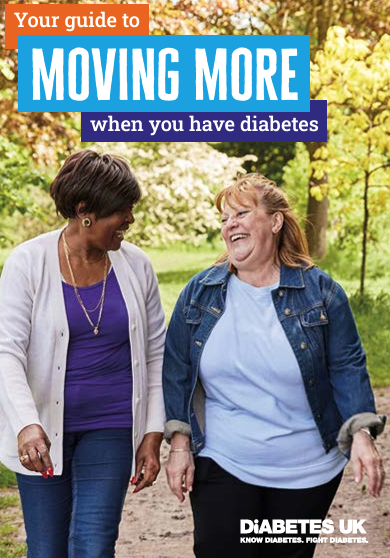
Looking after your feet
Food Labels
If you have any concerns or questions about your Diabetes, please contact the surgery to book and appointment with one of our Nurses.
More information and support can be found at:


